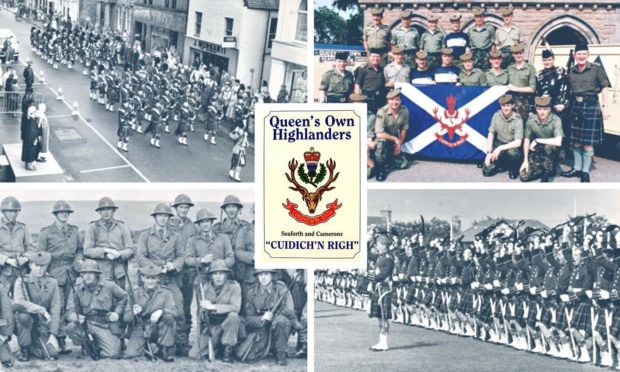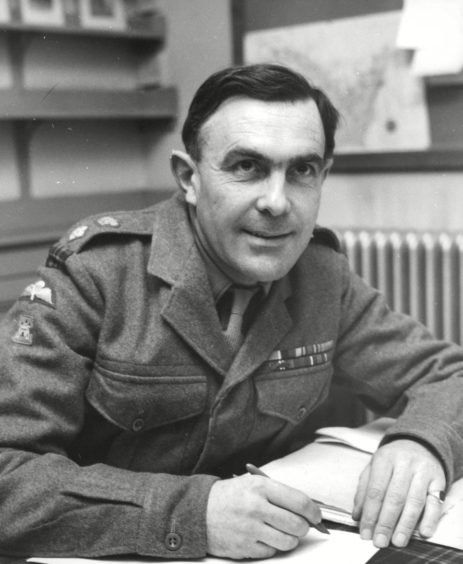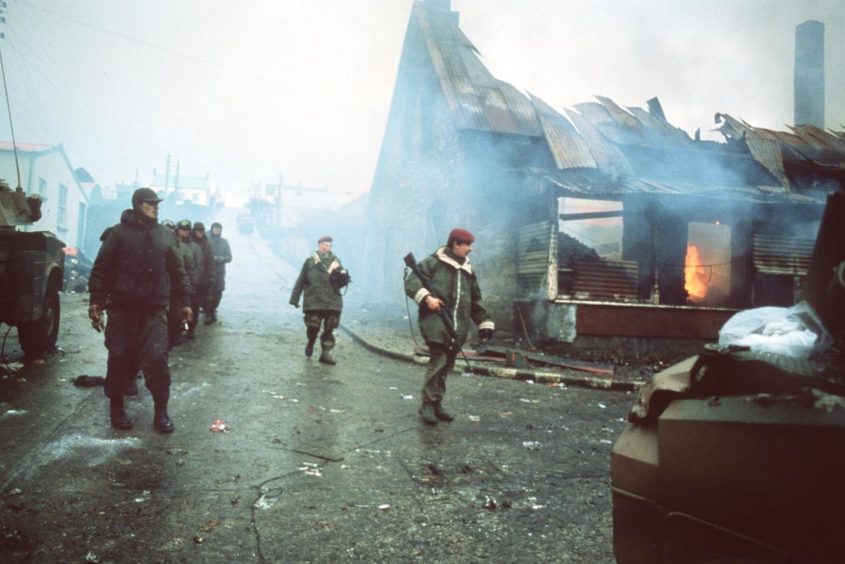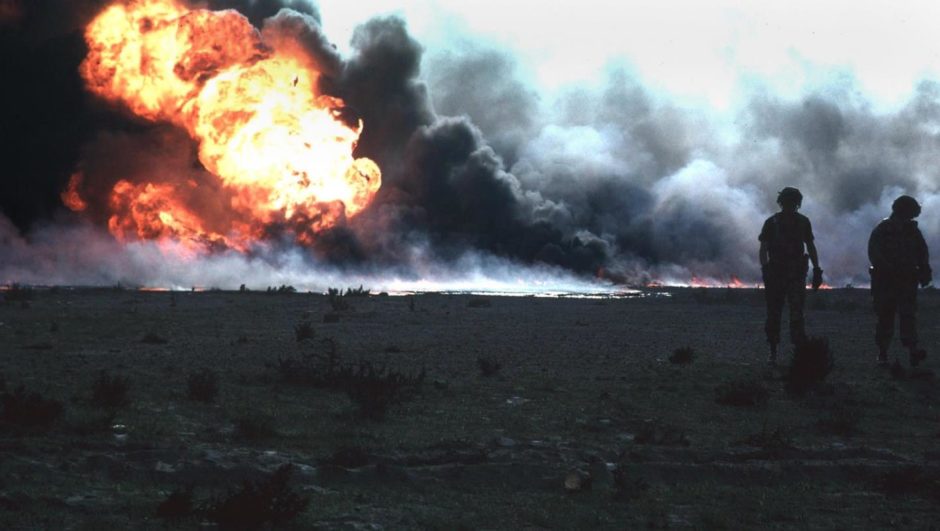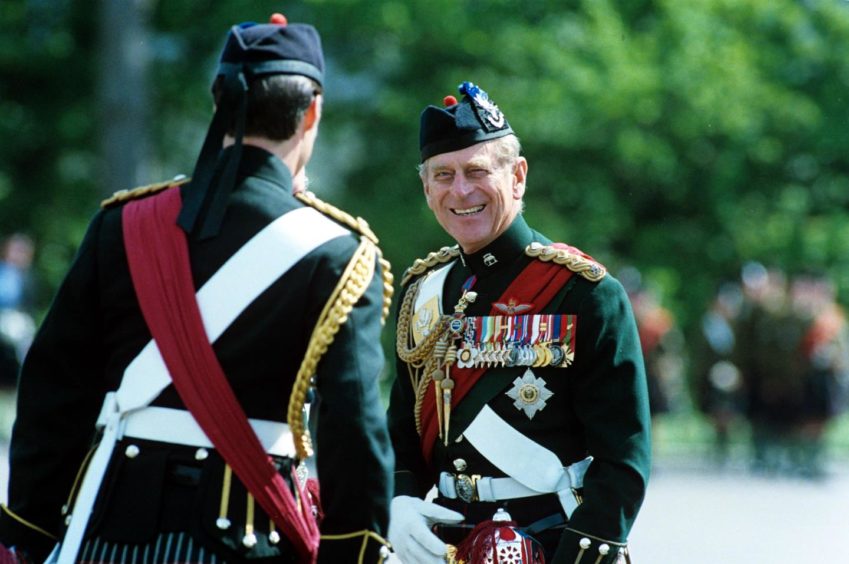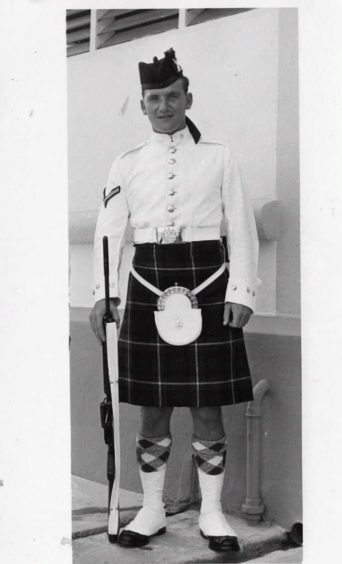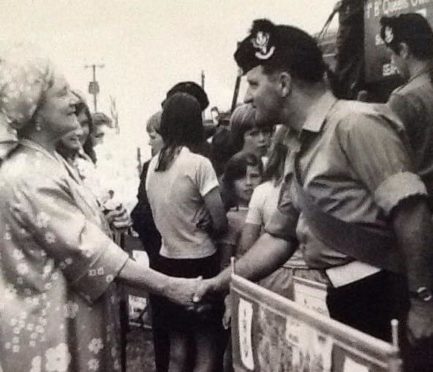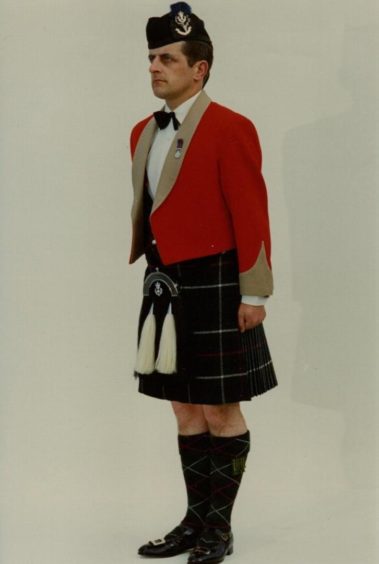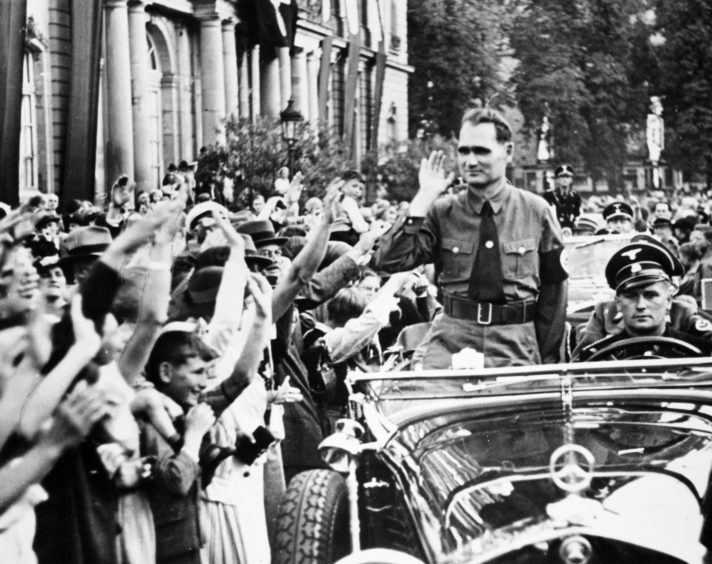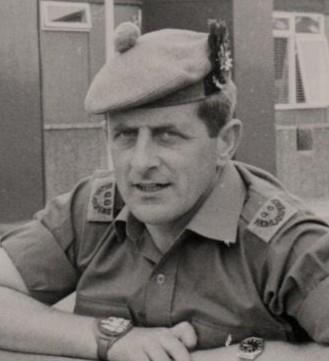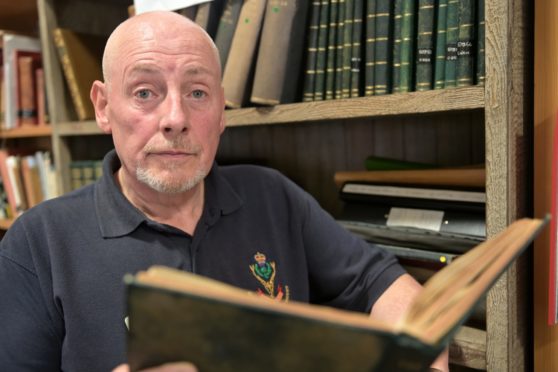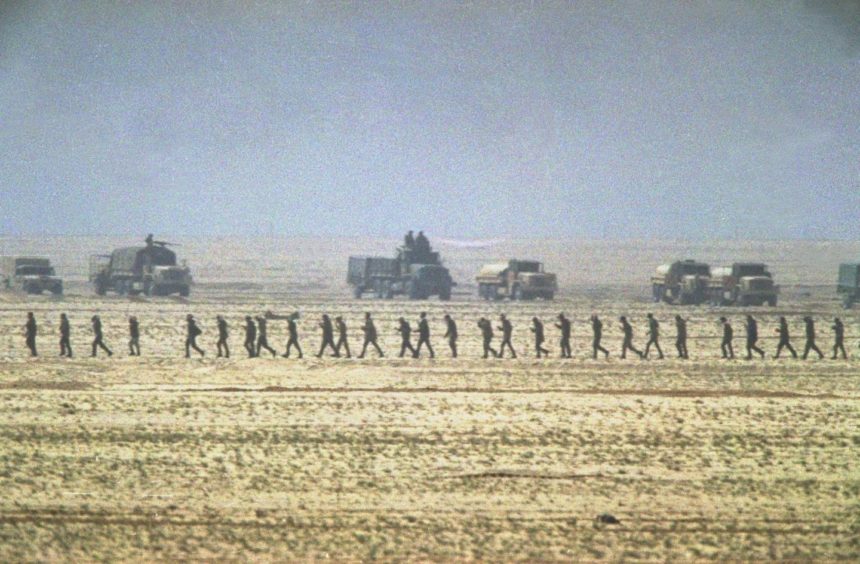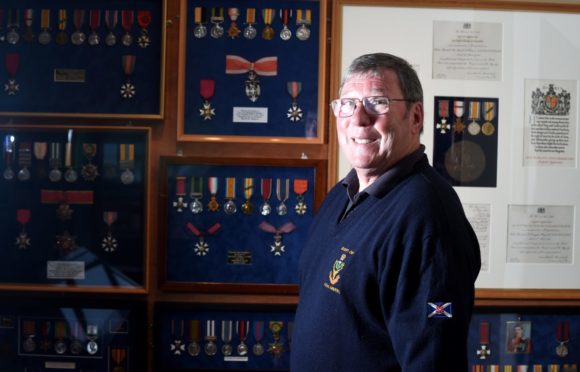This year marks an important milestone in north military history.
Commemorations for the 60th anniversary of the formation of the Queen’s Own Highlanders (QOHLDRS) regiment have been postponed due to the pandemic, but the P&J is marking the year here, with tributes, thoughts and feelings from soldiers who served in the regiment at different points during its six decades.
It’s fair to say that many QOHLDRS veterans get misty-eyed about their regiment- it was quite simply the best thing that ever happened to them.
1957 Defence White Paper
The later amalgamation of the regiment with the Gordon Highlanders in 1994 to become The Highlanders wasn’t easy to take for some, just as it wasn’t easy to take in 1961 for the soldiers in the ancient and proud Seaforth and Cameron regiments when they amalgamated.
The decision came from restructuring caused by the 1957 Defence White Paper.
The paper set out the reduction in size of the army to 165,000 following the end of National Service and the change to an entirely voluntary army; units were to be disbanded or amalgamated over two phases, to be completed in 1959 and 1962.
Amalgamation, 1961
On February 7 1961, the amalgamation of the Seaforth and Cameron Highlanders took place at Redford Barracks in Edinburgh.
After a parade, the officers and sergeants of the newly formed regiment assembled in the Officers’ Mess where the two stands of regimental colours were combined to symbolise the union, and glasses were raised to the new regiment.
The new recruiting area now embraced all the northern counties of Scotland, the Western Isles and the Orkney islands.
The regular battalion, a reserve battalion and units of the Army Cadet Force came together to form a tight regiment whose motto is ‘Cuidich ‘n Righ’ (Help the King), but whose unofficial motto might read ‘We are a family’.
During 1962-64, the regiment saw action in Singapore, Malaya, Borneo and Brunei before one of several tours in Germany, and a tour in Sharjah in 1969/70.
Tragedy during The Troubles
The battalion completed eight tours in Northern Ireland during The Troubles between 1971 -1990, and had to contend with considerable tragedy on Irish soil.
They lost their commanding officer when the IRA blew up an army convoy at Warrenpoint in August 1979.
Lieutenant- Colonel David Blair died alongside Lance-Corporal Victor Macleod and 16 soldiers from the 2nd Battalion, The Parachute Regiment.
It was the British Army’s worst single peacetime loss since the Second World War.
The Falklands
In 1982 the 1st Battalion was placed on stand-by as Spearhead Battalion during the Falklands war, and after the conflict, relieved the two brigades which fought there.
For their outstanding service to the civil community on the islands, the battalion was awarded the Wilkinson Sword of Peace.
The 1991 Gulf War
Then came Gulf War, with the 1st Battalion awarded Battle Honour: Gulf 1991 for its part.
Tragically, three members of the battalion died during the conflict.
Large elements of the battalion were deployed on Operation Granby to recover Kuwait after its occupation by Iraq.
Regimental achievements
The regiment’s extraordinary roll call includes providing two British Army Chiefs of the General Staff, one promoted to Field Marshal, five generals and five brigadiers.
It boasted the best pipes and drums in the army, with cabinets full of prizes won at Highland Games and piping competitions all over the world.
Amalgamation, 1994
As part of further defence reductions, amalgamation with the Gordon Highlanders took place on September 17, 1994, with the new regiment dubbed The Highlanders (Seaforths, Gordons and Camerons).
Twelve years later, they became The Highlanders, 4th Battalion, Royal Regiment of Scotland (4 SCOTS).
The Queen’s Own Highlanders’ regimental museum is at Fort George, near Ardersier, where we met five proud veterans who regularly volunteer there.
Colour Sergeant James Mutch
James Mutch from Moray was determined to follow other family members into the army when he joined the Seaforths aged 15 in 1959.
He went on to train with the junior leaders in Plymouth and two years later found himself at Fort George aged 17, regretting that he was too young to join the regiment as it headed to Singapore.
But a year later he was able finally to head to the far east where he joined the rifle company and served in various theatres of war.
At one point he had two sisters married to Argyll & Sutherland Highlanders, and a brother serving with the Argyll & Sutherland Highlanders so ‘the whole family was serving in Singapore at one time,’ Jimmy recalled.
He went on to tours in Germany, Edinburgh, the Middle East, Wales and Northern Ireland.
Regrets
Then came what Jimmy calls his biggest regret.
On leave at his parents’ home in Nairn, a visitor suggested he should take up work in the fabrication yard in Ardersier.
“It was financially double the money, my time was up and by that time I was married so I decided to come out.
“I regretted it. I lost the comradeship and the way of life.
“It was a great place to be, you saw the world.
“I enjoyed the whole period and wish I’d stayed.
“They were a great family regiment, you were always looked after no matter what happened and the comradeship was second to none.”
Colour Sergeant Major Peter Finlayson
Words echoed by Jimmy’s old comrade Peter Finlayson. The two were at Dyke school together and enjoy reminiscing during their volunteering sessions at Fort George.
Peter was called up as a national serviceman, but joined straightaway as a regular.
He started his training at Fort George, and didn’t look back.
“You’re never sure just what you’re going to be facing but it was good stuff and it gave me a life to come in here, the way things were run, good discipline.
“My father was a good disciplinarian and it never affected me at all coming in here.
“I was brought up in a large family and found it simple.”
The young farm hand from Moray who had never been out of Forres soon found himself sailing across the Mediterranean, through the Suez Canal and into Singapore.
“Everything went just clockwork. I enjoyed every moment, I knew I’d done the right thing.”
Peter had a spell in the regimental police in the far east, before returning to Redford Barracks, thence to tours in Germany, Northern Ireland and the Middle East.
“You’re totally with the men”
He loved his years as platoon sergeant, “the best rank in the British Army because you’re totally with the men all the time”.
“You would stand by your men. I could show you a photo of my platoon and sitting in the front is one fellow who became major quarter master and I remember him as a young Jock, and I knew somewhere along the line he was going to go upstairs.
“And so did a couple of others, it was staring at you in the face.”
Peter was in the regiment for 22 years, and went on to take his people skills into civilian life running a driving school in Elgin for 30 years.
When he heard about the 1994 amalgamation from his son, also in the QOHLDRS, Peter said: “I just couldn’t credit it.
“We had to take 200 out of the Queen’s Own Highlanders to accommodate the Gordon Highlanders.
“Nothing against the Gordons, they were suffering through recruitment to the oil industry and it was affecting their battalion.
“It destroyed recruiting in Moray and Inverness-shire, no doubt about it.
“At one point, in 1977, there were 95 sets of soldiers with fathers that had served before them, or brothers serving with them, all from Moray.”
Lieutenant Colonel Bob Towns
Another Moray lad facing a future as a farm hand was Robert (Bob) Towns from Speybay.
He left Milne’s High School in Fochabers, and joined up in 1964.
Over the years, he would rise to Lieutenant Colonel, be awarded an MBE, and is currently deputy lieutenant of Nairnshire, chairman of the Highland branch of the regimental association and president of Nairn Legion.
A distinguished military and civilian career, which he attributes entirely to the Queen’s Own Highlanders.
He said: “They are my other family. From being a wee boy with not a lot to look forward to in the future, the mixture of junior leaders’ training and all those who guided me in the right direction actually made me what I am today.
“Hopefully I passed that on to other people and they found the same route up to the top either in military life or in civilian street, where some Queen’s Own Highlanders have done extremely well indeed.”
Guarding Rudolf Hess
Bob’s career had many highlights- he was in Berlin in 1966 when the Cold War was at its height, and one of his duties was to guard Hitler’s notorious deputy, Rudolf Hess in Spandau Prison.
Bob said: “If my memory serves me correctly we did two hours sentry duty at a time in the watchtowers placed around the prison.
“In some of the towers you had the chance of spotting Hess as he walked or sat in the garden.
“I have a memory of a stooped figure with a stick walking slowly about the garden.
“I never heard him speak.”
The only blot on an otherwise distinguished career came when Bob managed to turn a 48 seater bus into a 47 seater trying to drive it out of Fort George when he was transport officer.
He says with a wry smile: “The soldiers applauded me- they did come to attention first, then applauded me- and as I escaped out the bus to run up to tell the commanding officer, somebody beat me to it, he knew by the time I reached battalion HQ that I had in fact crashed the bus- quite a disgrace for the transport officer.”
Tough times
The battalion had its share of tragedy.
Bob said: “During the Northern Ireland tour we lost the commanding officer and Lance Corporal Macleod.
“I happened to be on leave, and when you heard the news it really does affect you, especially when it’s your commanding officer but regardless of rank, every casualty that we had be it in road traffic accident or as a result of war was very difficult to take.
“In the Gulf War not many of us will be able to forget being taken to the side and formed up on parade while the commanding officer gave us the sad news that three had lost their lives due to friendly fire attack.
“We just had to get on with it, but even to this day, as a regimental family, the loss does feel like losing one of the family.
“Today we’ve got a young lad who runs a page on Facebook called the second battalion, for those who passed away and he remembers them on the anniversary of their death, that lets us think back to when things happened, the sad things, and how we can remember them in our own way.”
Warrant officer Class I Ernest Arthur Pope
Ernie Pope remembers his tour in South Armagh as the toughest of his career.
He joined the Queen’s Own Highlanders after leaving school to escape from his background in Glasgow.
“South Armagh was bandit territory. Most units lost people in South Armagh unlike perhaps Londonderry, Belfast or North Armagh or Fermanagh, where losing a soldier is very rare, but in South Armagh it wasn’t,” He said.
“So you have to be on your toes and you’re so close to enemy territory that they have an advantage.
“We lost our commanding officer and signaller at Warren Point, lost two other soldiers in a helicopter crash, and from Delta company, within four days of the battalion moving into place we lost Private Macmillan from the Black Isle, blown up in Crossmaglen Square.
“It just heightens your awareness and makes you adopt the professional tactics that you’ve been taught, makes sure that you look after each other and mutually support and try and get through the tour with minimum loss of life.”
Ernie now works as a part-time research volunteer at the Highlanders Museum.
He says the regiment gave him a confidence which has stood him in good stead as a civilian.
“There are no Queen’s Own Highlanders who don’t achieve something after leaving the service, and that’s to be respected,” he said.
Major John Bailey
John joined the Queen’s Own Highlanders in 1970, bringing with him a unique set of skills which saw him revolutionise data recording in the army.
He had been working as a computer programmer in Glasgow, but when it came to joining up, he was told he would have to be a staff sergeant in the pay corps to carry on with that, and put instead to the QOHLDRS.
It wasn’t long before his skills in record-keeping and data management shone through and he made his way to chief clerk of the battalion, being awarded an MBE in the process.
When the Gulf War started, he was head-hunted to be put in charge of field records, and tasked to create a database/IT system to serve all three services.
That’s when things really took off in John’s career.
John said: “I was given eight programmers and two months to do that and make it work.
“We did, which was an accolade in its own right.
“Then HQ said they wanted to see their vehicles, everything going on in the theatre, where the men were, where the equipment was, so we had to expand it to be a theatre location index.
“It was also a casualty reporting system registering all enemy and friendly forces dead.
“Prisoners of war came as an addition, because manpower is taken away from the front line to look after POWs, so it was important that we knew who was in the POW camp.”
John contracted a third party to create a tamperproof wrist band to stop POWs changing their identities among themselves, and within a short time had around 5,000 POWs recorded and tagged.
John said: “The Americans took this on after the Gulf War and we managed to keep track of the POWs by putting their data on their wrist bands so that we could move them through the lines by taking the data from the band. It was very useful.”
But John’s success eventually proved the army’s loss after 23 years as he was poached by the company who designed the wristbands and after five years with them, was head-hunted by a global company creating electronic tags for livestock.
Threatened with the scrapheap aged 55, John went on to found and build up his own highly successful livestock ID business.
He was director of the Highlanders Museum for four years until 2018, and now returns as a volunteer, in charge of cataloguing and displaying the 5,500 medals in the collection, a meticulous job with no room for error.
The collection will eventually go online and it’s hoped the museum will be able to generate some income from the sale of replica medals to families.
John said: “None of this would have happened without the army.
“The Queen’s Own Highlanders is a family above anything else, we look after each other and that to me is second to none.”
